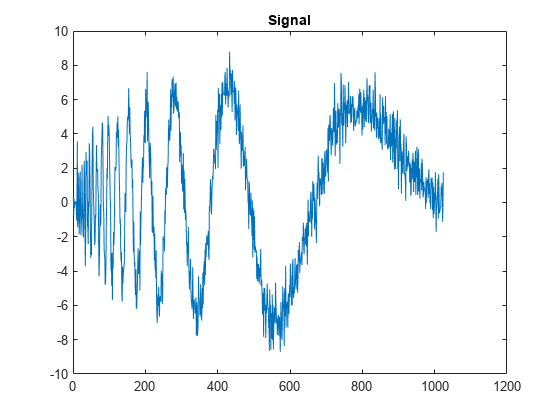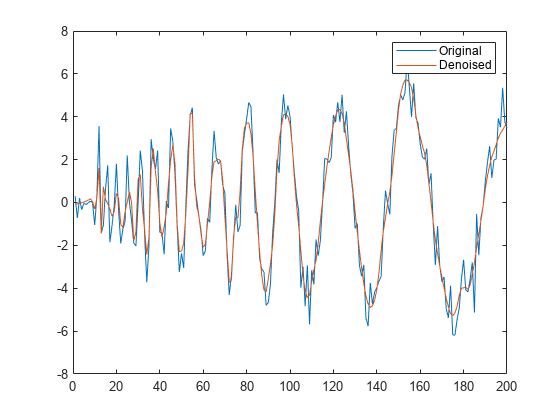Denoise Signal Using Generated C Code
This example shows how to denoise a signal using C code generated from the wdenoise function. Two techniques are demonstrated. The first technique uses a wrapper function which calls wdenoise. The second technique generates C code directly from wdenoise. Depending on your workflow, one technique may be preferred over the other. For example, to streamline code generation for large MATLAB® code, you can use wrapper functions to modularize the code.
Use Wrapper Function
Create a MATLAB function denoiseSignal that executes wdenoise and returns a denoised signal. The function takes two input arguments: a 1-D signal, and a denoising method. It passes these arguments to wdenoise. The function is included in the directory containing this example. The code for denoiseSignal follows.
function out = denoiseSignal(input,denMthd) %#codegen out = wdenoise(input,'DenoisingMethod',denMthd); end
The %#codegen directive indicates that the function is intended for code generation.
Use codegen (MATLAB Coder) to generate a MEX function. Code generation defaults to MEX code generation when you do not specify a build target. By default, codegen names the generated MEX function denoiseSignal_mex. To allow the generation of MEX file, specify the properties (class, size, and complexity) of the two input parameters:
coder.typeof(0,[1 Inf])specifies a row vector of arbitrary length containing realdoublevalues.coder.typeof('c',[1 Inf])specifies a character array of arbitrary length.
codegen denoiseSignal -args {coder.typeof(0,[1 Inf]),coder.typeof('c',[1 Inf])}
Code generation successful.
Load a signal.
load noisdopp plot(noisdopp) title('Signal')

Denoise the signal twice using denoiseSignal_mex. First, use the denoising method UniversalThreshold. Then, use the SURE method. Plot both results.
dn = denoiseSignal_mex(noisdopp,'UniversalThreshold'); dn2 = denoiseSignal_mex(noisdopp,'SURE'); figure plot([dn' dn2']) legend('Universal','SURE')

Use the MATLAB function and MEX function to denoise the signal using the Minimax method. Confirm the results are equal.
dnA = denoiseSignal_mex(noisdopp,'Minimax'); dnB = denoiseSignal(noisdopp,'Minimax'); max(abs(dnA-dnB))
ans = 6.2172e-15
Use Explicitly
You can also generate C code directly from wdenoise. Generate a MEX file that denoises a signal using the db4 wavelet. The generated MEX file is called wdenoise_mex.
codegen wdenoise -args {coder.typeof(0,[1 Inf]),coder.Constant('Wavelet'),coder.Constant('db4')}
Code generation successful.
Denoise the original signal.
dn3 = wdenoise_mex(noisdopp,'Wavelet','db4');
To confirm the MEX file accepts variable length inputs, denoise the first 200 samples of the original signal.
dn4 = wdenoise_mex(noisdopp(1:200),'Wavelet','db4'); figure plot([noisdopp(1:200)' dn4']) legend('Original','Denoised')
